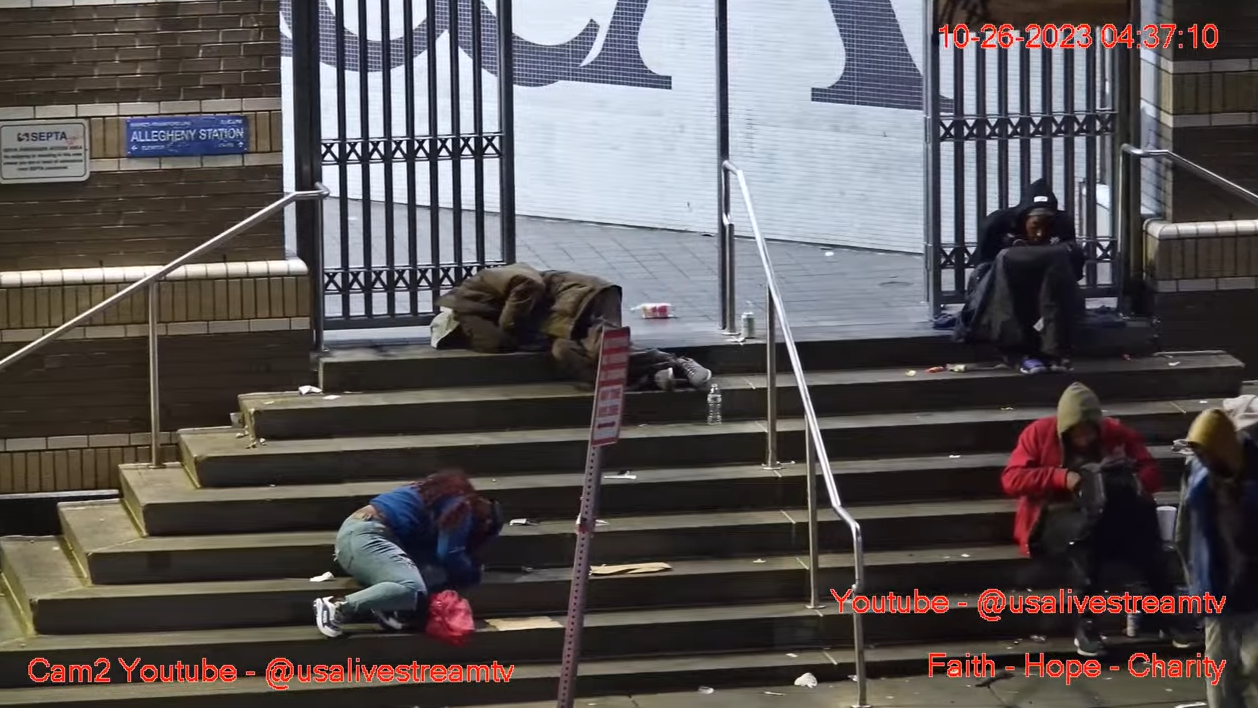The Kensington neighborhood in Philadelphia is one of the most brutally obvious signs of America’s public health crisis. The so-called “open air drug market” in the middle of the country’s sixth most populous city is where hundreds of people use drugs, some of whom are unhoused, usually without being arrested by the police. It is a failure of our health care system, our cities, and our drug enforcement policies on public display.
For some, it’s also a content farm, where they turn other people’s misery into engagement and profit.
As I am writing this, 675 people are watching a YouTube livestream from a channel called USALIVESTREAM of a camera that is panning back and forth over the corner of Kensington Avenue and East Allegheny, where there’s a SEPTA train station that people congregate around. As is normal on YouTube, to the right of the video is a chat where viewers can talk to each other, and pay to post stickers and “super chats,” highlighted messages that cost as much as $500. The revenue generated from this chat is split between YouTube and the YouTube channel owner. YouTube and the channel owner also make money via pre-roll ads viewers have to watch before the video starts. It is a live version of a growing trend, mostly on YouTube and TikTok, where people make videos of people in distress, specifically in Kensington.

